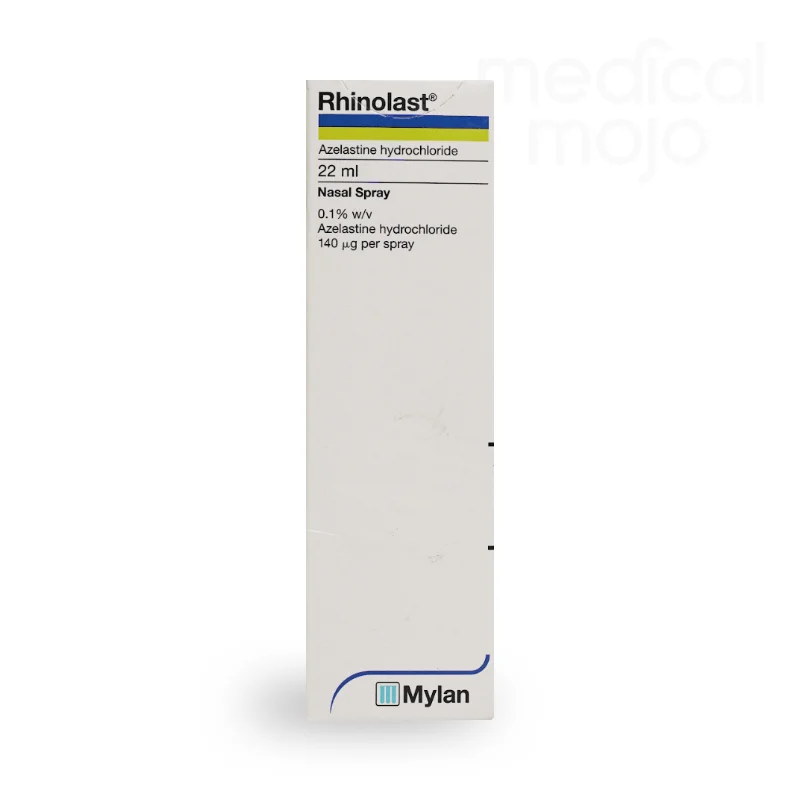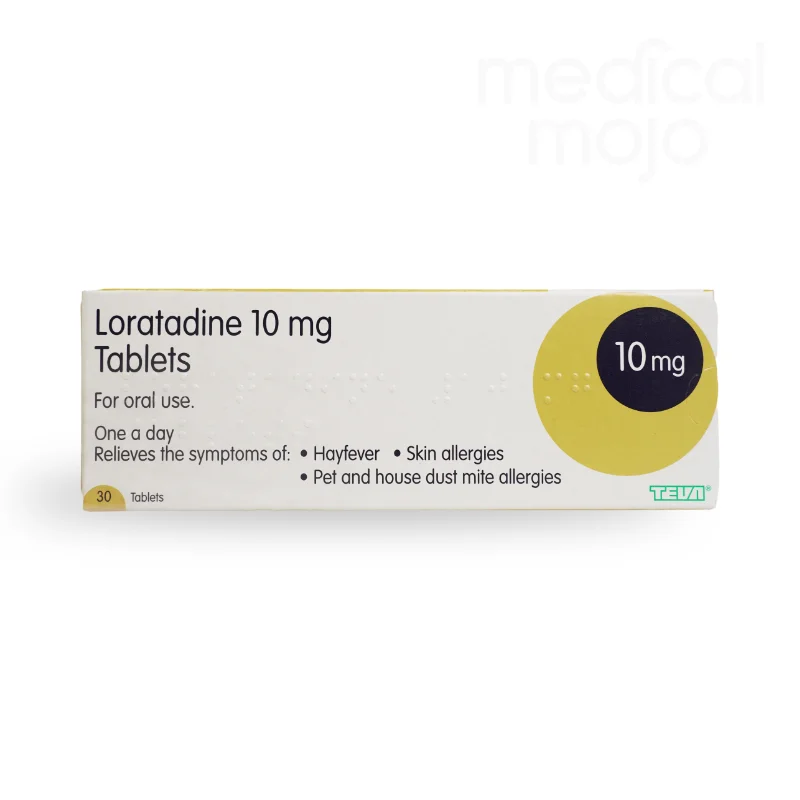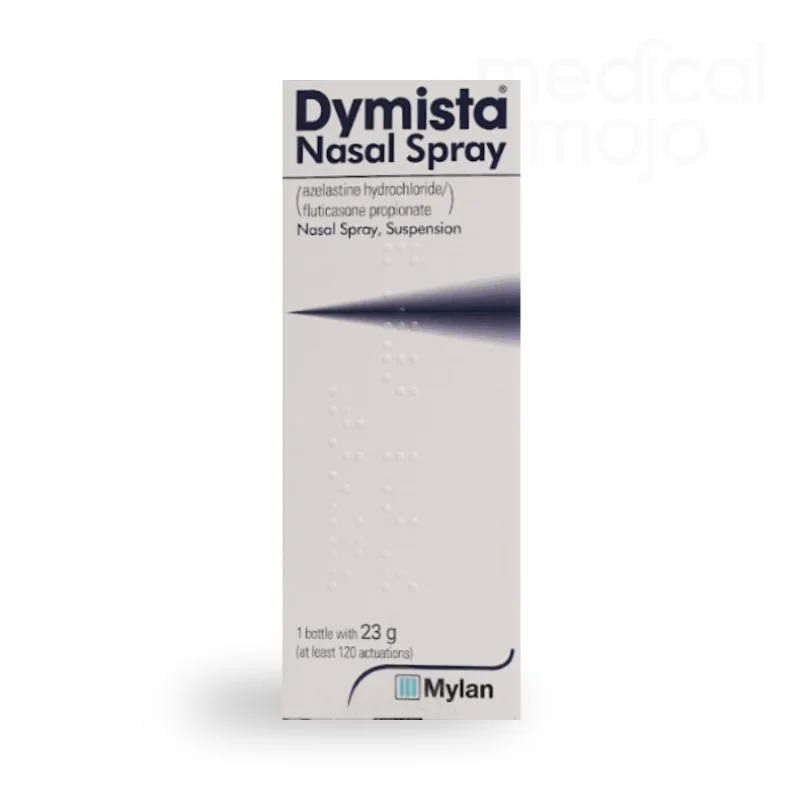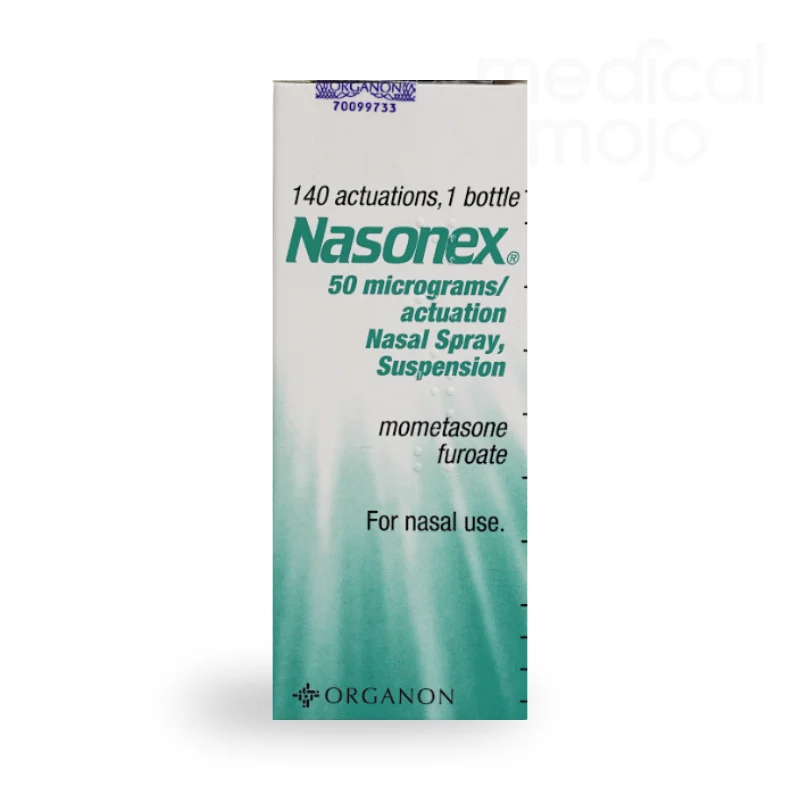What is Rhinolast and what is it used for?
Rhinolast is a nasal spray that contains azelastine hydrochloride, an antihistamine designed to relieve symptoms of allergic rhinitis, which is also known as hay fever. This medication helps alleviate symptoms such as nasal congestion, sneezing, and a runny nose. Azelastine hydrochloride is effective against allergies triggered by pollen, as well as household allergens like dust mites and pet dander. Rhinolast is available by prescription, comes in a 22ml bottle with approximately 140 metered sprays, and can be used by adults and children aged 6 and older.
What is allergic rhinitis?
Allergic rhinitis is a condition that occurs when your immune system overreacts to allergens, mistaking them for harmful substances. When allergens like pollen or dust enter the nose, the immune system responds by producing extra mucus and releasing histamines, leading to inflammation in the nasal passages. This reaction causes symptoms such as congestion and sneezing. Allergic rhinitis is very common, affecting about 20% of people in the UK. While the exact cause of these allergies isn't fully understood, they often run in families.
How does Rhinolast work?
Rhinolast works by blocking the action of histamine, a chemical released during an allergic reaction. The active ingredient, azelastine hydrochloride, is an antihistamine that prevents histamine from binding to its receptors in the nasal passages, thereby reducing and preventing allergic symptoms like sneezing, itching, and nasal congestion.
How quickly does Rhinolast work?
Rhinolast provides relief from allergy symptoms for up to 12 hours after use. However, if your allergic rhinitis is severe, it may take a few days of regular use for Rhinolast to reach its full effectiveness.
What are the alternatives to Rhinolast?
If Rhinolast does not provide sufficient relief, there are other treatments available. Another prescription nasal spray is Dymista, which combines an antihistamine with a corticosteroid. However, you should not use Dymista and Rhinolast simultaneously, as this would exceed the recommended dose of antihistamine.
Other alternatives include:
- Over-the-counter antihistamines: Piriton, Loratadine, Cetirizine
- Prescription antihistamines: Telfast, Xyzal
- Over-the-counter nasal sprays: Pirinase, Beclometasone
- Prescription nasal sprays: Avamys, Flixonase, Nasonex
- Eye drops: Opticrom, Optilast
It’s recommended to try over-the-counter treatments before moving on to prescription-only options.
How should I use Rhinolast?
For adults and children over 6 years old, the usual dosage is one spray in each nostril, morning and evening.
Steps for use:
- Blow your nose to clear your nostrils.
- Remove the protective cap from the bottle.
- If using for the first time, prime the pump by pressing it several times until an even spray is released.
- Keep your head upright and spray once into each nostril.
- Wipe the nozzle and replace the protective cap after use.
Do not use Rhinolast if it has passed its expiry date or if the bottle has been open for more than 6 months. If you need more Rhinolast, consult your doctor for a new prescription.
What ingredients are in Rhinolast?
The active ingredient in Rhinolast Nasal Spray is azelastine hydrochloride 0.1% w/v. The other ingredients include hypromellose, disodium edetate, citric acid, disodium phosphate, sodium chloride, and purified water.
What are the possible side effects of Rhinolast?
Not everyone will experience side effects from Rhinolast, but the most commonly reported one is an unpleasant taste in your mouth, which may cause nausea. In rare cases, Rhinolast may cause irritation inside the nose. If you experience these or any other side effects, stop using the product and consult your doctor or pharmacist.
What warnings should I be aware of when using Rhinolast?
Do not use Rhinolast if:
- You are allergic to any of the ingredients.
- You are under 6 years old.
Can I use Rhinolast during pregnancy and breastfeeding?
If you are pregnant, trying to become pregnant, or breastfeeding, consult your doctor or pharmacist before using Rhinolast.
Always read the packaging and the Patient Information Leaflet before using any new medication, and inform your doctor about any other medicines you are taking or planning to take.











